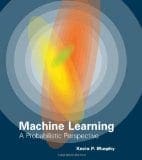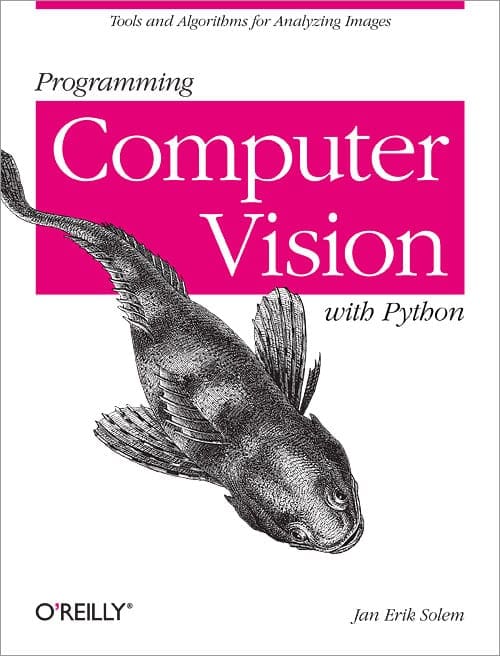
Image created by Author using Midjourney
Introduction
Large language models (LLMs) have become extremely prominent and useful for all sorts of tasks, but new users may find the large number of LLM tools and utilities intimidating. This article focuses on 5 of the available and widely-useful such tools, all of which are no-cost and created to help maturing minds take advantage of the wide variety of available language models: Transformers, LlamaIndex, Langchain, Ollama, and Llamafile.
1. Transformers
One of the most prominent libraries for modern natural language processing (NLP) model frameworks, Transformers comes from the NLP powerhouse Hugging Face. The variety of pre-trained models available in Transformers is vast, with both foundational and fine-tuned models designed for tasks such as text classification, translation, question answering, and more.
Key Features
- versatility (models exist for backends like PyTorch and TensorFlow)
- plentiful pre-trained models that can be customized
- user-friendly APIs and docs
- a robust user base to answer questions and help
Transformers is good for new users, as it is very simple to pick up the basics, but also useful enough to help with even the most complex of tasks. The library comes with extensive documentation, user-friendly APIs, and a nearly-unfathomable collection of available models. With Transformers, beginners can start using state-of-the-art models without a ton of deep learning knowledge.
Getting Started
First, install Transformers:
|
1 |
pip install transformers |
Example: Loading a pre-trained model and running inference
|
1 2 3 4 5 |
from transformers import pipeline classifier = pipeline("sentiment-analysis") result = classifier("I love using the Transformers library!") print(result) |
2. LlamaIndex
LlamaIndex is a data framework customized for LLM use cases, especially retrieval augmented generation (RAG). It streamlines connections between LLMs and different data sources, thus enabling the easy building of complicated data-based LLM applications.
Key Features
- built-in basic data source connectors
- ability to customize for different use cases and complexity levels
- a variety of pre-packaged task-specific starter solutions in the form of Llama Packs
- ample documentation
LlamaIndex is helpful for beginners because it simplifies the initial setup and takes care of the plumbing required to connect data to application, allowing for easy integration with data sources as well as tinkering to one’s liking. Thanks to its solid documentation, developers can quickly pick up what they need to get going and build their applications in a particular direction.
Getting Started
First, install the library:
|
1 |
pip install llama-index |
Example: Building a very simple RAG application (taken from here)
Note that for this example your OpenAI API key must be set as an environment variable, and that LlamaIndex uses OpenAI’s gpt-3.5-turbo model by default. I am also using a copy of the Machine Learning Mastery ebook “Maximizing Productivity with ChatGPT” as my sole RAG document, located in the “data” directory.
|
1 2 3 4 5 6 7 8 |
from llama_index.core import VectorStoreIndex, SimpleDirectoryReader documents = SimpleDirectoryReader("data").load_data() index = VectorStoreIndex.from_documents(documents) query_engine = index.as_query_engine() response = query_engine.query("Tell me a little about prompt engineering.") print(response) |
3. Langchain
LangChain is a framework which allows AI engineers to connect language models with a vast array of data sources, as well as with other LLMs. Langchain also provides pathways for context-aware reasoning applications, offering tools for building capable agents that can perform complex reasoning tasks for problem solving.
Key Features
- an interface for creating and handling agents, tools and libraries
- and support for reasoning applications and the tracing and evaluation thereof
Beginners can use Langchain to quickly build intelligent agents, as it makes application development painless and comes with a robust set of tools and templates to get things moving.
Getting Started
Install Langchain via pip:
|
1 |
pip install langchain |
Example: Check out the Langchain quickstart guide for a useful introductory tutorial
4. Ollama
Ollama is designed to provide easy access to multiple LLMs, such as Llama 3, Mistral, Gemma and more, and makes managing them painless by lessening both deployment and management overhead. You can use Ollama to quickly setup local LLMs for both interaction as well as development.
Key Features
- support for multiple large language models
- integration with a range of libraries and extensions
- painless methodologies to deploy models
Ollama is good for beginners since it brings together a slew of leading large language models, and makes them easier to deploy and run. Get your hands on Llama 3 locally, for example, and then connect to the same model via Ollama in your favorite LLM development framework (Langchain, LlamaIndex, etc.) for development. It really solves multiple problems at once.
Getting Started
Install Ollama via their website for your platform, and then use the Python library to interact:
|
1 |
pip install ollama |
Example: Use a model in your own Python application (taken from here)
|
1 2 3 4 |
import ollama response = ollama.generate(model='gemma:2b', prompt='what is a qubit?') print(response['response']) |
5. Llamafile
Llamafile was born to make sharing and running LLMs a cinch with a single file. It makes distributing and running models painless by keeping its process simple and straightforward.
Key Features
- one-click sharing and running of LLMs
- incredibly easy setup and use
- variable backend support
This tool helps manage LLM assets, which in turn assist with communicating with and running LLMs. Its minimal complexity gives additional ease to newbies.
Getting Started
Use pip to install Llamafile:
|
1 |
pip install llamafile |
Example: load and query the Mistral llamafile from the command line
|
1 |
./mistral-7b-instruct-v0.2.Q5_K_M.llamafile --temp 0.3 -p '[INST]what is a qubit?[/INST]' |
Summary
In this article, we have outlined 5 tools to get beginners started using LLMs: Transformers, LlamaIndex, Langchain, Ollama, and Llamafile. Each one offers a unique set of tasks, advantages, and features, aimed at aiding beginners in grasping the subtleties of the LLM development landscape, and interacting with it. These tools provide a great jumping off point for understanding LLMs.
Be sure to visit and reference each of the project’s repositories and documentation to help guide you in your quest to learn and experiment with these tools. Enjoy the process!







Fantastic!
Thank you for sharing 🤗!
You are very welcome Eddy!
Very informative material, Thanks for sharing
You are very welcome! Thank you for your support and feedback!
Send more about machine learning latest techniques
Hi Zahid…Sure, I’d be happy to share some insights on the latest techniques in machine learning. Machine learning is a rapidly evolving field, and staying up-to-date with the latest advancements can be incredibly beneficial. Here are some of the recent trends and techniques:
### 1. **Transformers and Attention Mechanisms**
**Transformers** have revolutionized natural language processing (NLP) and are now being applied to various other domains. They rely on self-attention mechanisms to process input data in parallel, making them highly efficient and effective.
– **BERT (Bidirectional Encoder Representations from Transformers)**: Pre-trained transformer model that has set new benchmarks in various NLP tasks.
– **GPT (Generative Pre-trained Transformer)**: Known for its ability to generate coherent and contextually relevant text, with GPT-3 and GPT-4 being the most recent iterations.
– **Vision Transformers (ViT)**: Applying transformers to image processing, achieving competitive results with traditional convolutional neural networks (CNNs).
### 2. **Graph Neural Networks (GNNs)**
Graph Neural Networks are designed to work with graph-structured data, such as social networks, molecular structures, and knowledge graphs. They have shown great promise in various applications including drug discovery, recommendation systems, and fraud detection.
– **Graph Convolutional Networks (GCNs)**: Extend the convolution operation to graph data.
– **Graph Attention Networks (GATs)**: Incorporate attention mechanisms into graph data processing.
### 3. **Self-Supervised Learning**
Self-supervised learning involves training models on data without explicit labels, leveraging the inherent structure of the data to create pseudo-labels. This technique has gained popularity due to its ability to make use of large unlabeled datasets.
– **Contrastive Learning**: A popular self-supervised approach where the model learns to distinguish between similar and dissimilar data points.
– **SimCLR (Simple Framework for Contrastive Learning of Visual Representations)**: An example of a self-supervised learning method that uses contrastive learning for visual data.
### 4. **Federated Learning**
Federated learning allows training machine learning models across decentralized devices or servers holding local data samples, without exchanging them. This technique is particularly useful for privacy-preserving machine learning.
– **Federated Averaging (FedAvg)**: An algorithm where local models are trained independently and then averaged to create a global model.
### 5. **Meta-Learning**
Meta-learning, or “learning to learn,” focuses on developing models that can learn new tasks quickly with minimal data. This is particularly useful in scenarios where data is scarce.
– **MAML (Model-Agnostic Meta-Learning)**: A popular meta-learning algorithm that trains a model’s parameters such that they can be quickly adapted to new tasks.
### 6. **Reinforcement Learning Advancements**
Reinforcement learning (RL) continues to see advancements, particularly in combining it with deep learning to solve complex tasks in various domains.
– **Deep Q-Learning (DQN)**: Combines Q-learning with deep neural networks to handle high-dimensional state spaces.
– **Proximal Policy Optimization (PPO)**: An RL algorithm that balances exploration and exploitation efficiently.
– **AlphaFold**: An example of using deep reinforcement learning for protein structure prediction.
### 7. **Explainable AI (XAI)**
As machine learning models become more complex, there is a growing need for techniques that make these models interpretable and explainable. XAI aims to provide insights into how models make decisions.
– **LIME (Local Interpretable Model-agnostic Explanations)**: Explains the predictions of any classifier by approximating it locally with an interpretable model.
– **SHAP (SHapley Additive exPlanations)**: A unified approach to explain the output of any machine learning model based on cooperative game theory.
### 8. **AutoML (Automated Machine Learning)**
AutoML involves automating the end-to-end process of applying machine learning to real-world problems, making it accessible to non-experts and improving productivity for experts.
– **Auto-Keras**: An open-source AutoML system based on Keras.
– **Google AutoML**: A suite of machine learning tools by Google that automates model selection and hyperparameter tuning.
### 9. **Neural Architecture Search (NAS)**
NAS automates the process of designing neural network architectures. By leveraging search algorithms, NAS can discover high-performing architectures tailored to specific tasks.
– **EfficientNet**: A family of models that use NAS to balance network depth, width, and resolution efficiently.
– **NASNet**: Uses reinforcement learning to search for the best convolutional neural network architecture.
### 10. **Few-Shot and Zero-Shot Learning**
Few-shot and zero-shot learning techniques enable models to generalize to new tasks with little to no training data.
– **Siamese Networks**: Used for one-shot learning by comparing input pairs.
– **CLIP (Contrastive Language–Image Pre-training)**: Developed by OpenAI, allows zero-shot learning by training on a wide variety of images paired with text.
### Conclusion
These techniques represent some of the cutting-edge advancements in machine learning, each addressing specific challenges and opening up new possibilities for various applications. Keeping abreast of these developments and understanding how to apply them can significantly enhance the effectiveness of machine learning projects.
Very insightful thanks a ton
You are very welcome Fahad! We appreciate your support!